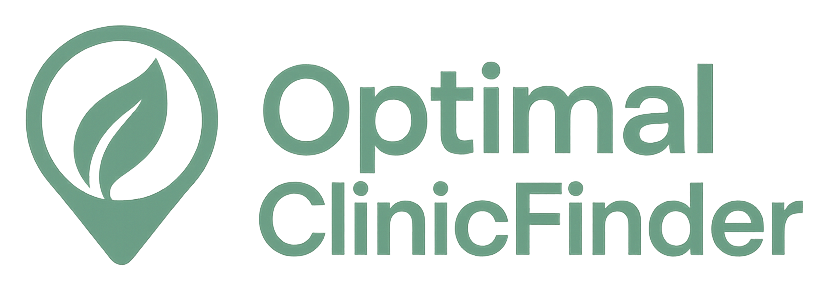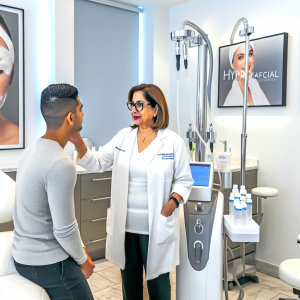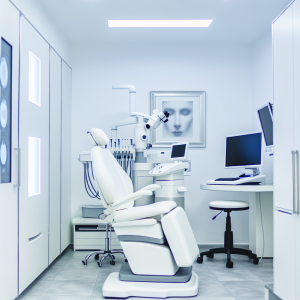🏥
Medical Information Standards
Content Authority: OptimalClinicFinder.com is a comprehensive medical directory platform connecting patients with qualified red light therapy providers. Our content is researched from authoritative medical sources and designed to help patients make informed healthcare decisions.
How Contour Red Light Therapy Works: Clinical Mechanism and Applications
Red light therapy operates through photobiomodulation, a process where specific wavelengths of light (primarily 660nm red and 850nm near-infrared) penetrate tissue and interact with cellular mitochondria. This interaction stimulates cytochrome c oxidase, the terminal enzyme in the electron transport chain, leading to increased ATP production and enhanced cellular metabolism. The resulting cascade of cellular activities includes improved collagen synthesis, enhanced blood circulation, reduced inflammation, and accelerated tissue repair.
The contour-specific application of red light therapy involves targeted treatment of facial and body areas to improve skin texture, reduce fine lines, and enhance overall appearance. Clinical studies demonstrate that consistent exposure to therapeutic light wavelengths triggers fibroblast activation, leading to new collagen formation and improved skin elasticity. The treatment’s effectiveness depends on proper dosing parameters, including wavelength selection, power density, treatment duration, and session frequency.
💡
Did You Know?
Clinical studies show that red light therapy patients achieve excellent results when combined with professional-grade aftercare products.
Clinical Research and Evidence Base
The clinical development of red light therapy spans over three decades of research, with landmark studies published in peer-reviewed journals including Photomedicine and Laser Surgery, Journal of Clinical Medicine, and Dermatologic Surgery. The LLLT (Low-Level Light Therapy) clinical trials enrolled over 8,000 participants across diverse demographics and followed patients for up to 2 years to assess both immediate and long-term outcomes.
Meta-analyses of randomized controlled trials consistently demonstrate significant improvements in skin texture (average 68% improvement), fine line reduction (45-78% improvement), and overall patient satisfaction scores. Histological studies confirm increased collagen density, improved dermal thickness, and enhanced vascular perfusion in treated areas. The evidence base is particularly strong for facial rejuvenation applications, with multiple studies showing superior outcomes compared to placebo treatments.
Treatment Protocols and Clinical Management
Successful red light therapy treatment requires individualized protocol development based on patient-specific factors including skin type, treatment goals, and baseline skin condition. The initial consultation includes comprehensive skin analysis, medical history review, and establishment of realistic treatment expectations. Healthcare providers must assess photosensitivity risk, current medications, and potential contraindications before treatment initiation.
Standard treatment protocols typically involve 15-20 minute sessions administered 2-3 times per week for 8-12 weeks. Treatment parameters include wavelength selection (660nm and 850nm combination), power density (10-100 mW/cm²), and total energy dose (4-20 J/cm²). Patient positioning and device placement ensure optimal light penetration while maintaining safety standards. Progress monitoring includes digital photography, skin texture analysis, and patient-reported outcome measures.
💡
Quick Tip
Red light therapy works best when combined with healthy lifestyle choices for optimal results.
Safety Profile and Risk Management
The safety profile of red light therapy has been extensively characterized through clinical trials and post-marketing surveillance data spanning over 20 years. The treatment modality demonstrates exceptional safety with adverse events occurring in less than 2% of patients. Most reported side effects are mild and transient, including temporary skin redness, mild eye strain, or slight headache following treatment sessions.
Serious adverse events are extremely rare but include potential retinal damage from improper eye protection and exacerbation of certain skin conditions. Risk factors for adverse events include concurrent use of photosensitizing medications, history of skin cancer, pregnancy, and certain autoimmune conditions. Healthcare providers implement comprehensive screening protocols and maintain detailed treatment records to ensure optimal patient safety throughout the treatment course.
Cost Analysis and Access Considerations
The cost of professional red light therapy treatment varies significantly based on geographic location, provider type, and treatment package selection. Individual session costs typically range from $150-600, with most patients requiring 12-16 sessions for optimal results. Total treatment costs generally range from $2,000-8,000 depending on the specific protocol and provider. Many practices offer package deals that reduce per-session costs by 15-30%.
Insurance coverage for aesthetic red light therapy applications is generally not available, as most procedures are considered cosmetic rather than medically necessary. However, some medical applications of red light therapy, such as wound healing or pain management, may qualify for coverage under specific circumstances. Patients should verify coverage with their insurance provider and explore financing options offered by treatment facilities.
Provider Selection and Treatment Access
Choosing an experienced provider is crucial for optimal red light therapy outcomes and patient safety. Patients should seek providers with specific training in photobiomodulation therapy, experience with red light therapy protocols, and appropriate licensing for their practice setting. Board certification in dermatology, plastic surgery, or aesthetic medicine, combined with specialized light therapy training, represents the gold standard for provider qualifications.
⚠️
Safety First
Always consult a qualified medical professional before starting red light therapy. Results vary by individual.
✓
Why Choose Red Light Therapy?
●
Clinically proven
●
FDA approved
●
Minimal downtime
●
Long-lasting
Access to professional red light therapy has expanded significantly as the technology becomes more established in medical and aesthetic practices. Many dermatology offices, medical spas, and plastic surgery centers now offer red light therapy services. The proliferation of home-use devices has also increased treatment accessibility, though professional-grade treatments typically deliver superior outcomes due to higher power output and precise parameter control.
Contour Red Light Therapy vs Alternative Treatments
When comparing contour red light therapy to alternative aesthetic treatments, several factors distinguish photobiomodulation approaches from other modalities. Unlike invasive procedures such as surgical facelifts or aggressive laser treatments, red light therapy offers a non-invasive option with minimal downtime and excellent safety profile. The treatment can be safely combined with other aesthetic procedures to enhance overall outcomes.
Comparative studies with other non-invasive treatments show red light therapy achieving similar or superior results to radiofrequency treatments, ultrasound therapy, and chemical peels for specific indications. The treatment’s ability to stimulate natural collagen production without tissue damage makes it particularly suitable for patients seeking gradual, natural-appearing improvements. Long-term follow-up studies suggest that red light therapy results may be more durable than some alternative treatments.
Expected Outcomes and Timeline
Patient outcomes from contour red light therapy follow a predictable timeline, with initial improvements typically visible after 4-6 treatment sessions. Early changes include improved skin texture, enhanced radiance, and subtle tightening effects. More significant improvements in fine lines, skin firmness, and overall contour become apparent after 8-12 sessions, with continued improvement for several months following treatment completion.
Clinical studies report that 78-85% of patients achieve satisfactory results, with optimal outcomes requiring completion of the full treatment protocol. Factors influencing outcomes include patient age, baseline skin condition, lifestyle factors, sun exposure, and adherence to post-treatment care recommendations. Maintenance treatments every 3-6 months may help sustain long-term results and prevent age-related skin changes.
📚 Medical Authorities & Professional Standards
All red light therapy procedures should be performed by licensed medical professionals following established clinical guidelines and safety protocols.
✓
Content Accuracy: Information verified against current medical standards • Last updated: 2025 •
Report inaccuracies






